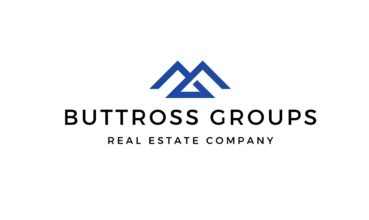As institutional real estate investors navigate an increasingly complex regulatory and operational landscape, IQ-EQ, a leading global investor services provider with over $750 billion in ass...
Lofty's Max Ball on Creating a Fluid Property Exchange Platform




“We think we’ve found the kicker to scale a business to be much larger than what’s out there,” says Max Ball, co-founder of Lofty. Unlike typical real estate tokenization platforms, Lofty has built something fundamentally different: a comprehensive exchange where property ownership trades as fluidly as stocks, while maintaining the benefits of direct real estate investment. With over 150 properties and $65 million in transaction volume, their approach is gaining traction.
From AI Predictions to Real Estate Exchange
The journey to creating this platform began with a different vision entirely. Observing revitalization in Los Angeles’ Arts District, where property values doubled as cafes and breweries moved in, Ball’s co-founder Jerry became fascinated with predicting neighborhood growth. Their initial concept used AI to analyze social media trends – even finding correlations between property values and Instagram posts of French bulldogs, which indicated higher-income residents moving in.
While this novel approach earned them a spot in Y Combinator, the breakthrough came in early 2021 when they recognized how blockchain technology could address fundamental problems in real estate: liquidity constraints, ownership tracking, and complex accounting. “We launched the first tokenized property on YC’s internal forum, and it sold out in about a month,” Ball recalls. “We thought, this is super interesting. Let’s just do this.”
The Architecture of Property Exchange
When a property joins Lofty, it’s transferred to a Wyoming DAO LLC – a decentralized autonomous organization where ownership is managed by smart contracts. Property owners can then sell tokens representing ownership stakes, starting at just $50 per token. These aren’t just passive investments – token holders have real voting rights on property decisions, from adding ADUs to approving repairs.
The platform has seen remarkable success stories. One recent property, a 32-unit complex, saw its owner sell $550,000 in equity within eight weeks, with $270,000 trading in just the last month. In another instance, a homeowner is using the platform to sell partial equity in his primary residence while maintaining occupancy, effectively creating a new form of home financing.
Market Making and Active Trading
Lofty’s solution to real estate’s liquidity challenge stands out through their market-making service, where investors can buy and sell tokens instantly without waiting to match with a counterparty. “A property might be trading at $53 per token now, but next month the yield could hit 30-35% during peak season,” Ball explains. “People are buying tokens knowing they could probably flip them for $65-70.”
This has created a unique ecosystem where even tenants participate as investors. “If the tenant is also an owner, they’re probably going to take better care of the property,” Ball notes. “We’ve had tenants submit governance votes like, ‘I’m an owner in this property, I also live here. It would be amazing if there was a new ceiling fan in my bedroom.'”
Building for Scale
Unlike many proptech companies that have struggled with capital-intensive models, Lofty operates purely as a marketplace, taking 3% from each side of a trade. Their infrastructure handles everything from daily rent distributions to automated tax documentation, enabling features like 1031 exchanges between properties and upcoming plans for leveraged token purchases.
“85% of residential properties in the US are owned by mom and pop investors with one to two units. They want that intimate experience with the property,” Ball explains. This focus on engaging active investors rather than passive capital shows in user behavior – most users log in multiple times daily, unusual for a real estate platform.
The platform has particularly resonated with vacation rental owners looking to tap equity without sacrificing advantageous existing mortgages. Properties listed by successful sellers often see instant demand, with some tokens selling out immediately based on the owner’s track record.
As traditional real estate faces challenges from high interest rates and market uncertainty, Lofty’s model offers a distinctive option for both property owners and investors. By merging public market liquidity with direct property ownership benefits, they’ve created an innovative approach that could reshape how we think about real estate investment – making property markets as fluid as stock exchanges while preserving the hands-on aspects that attract individual investors.
Similar Articles
Explore similar articles from Our Team of Experts.


After syndicating over $7.5 billion in real estate deals and selling his previous company with $1 billion in assets under management, Michael Anderson, Founding Member of PREIshare, could ha...


In an industry where timing is everything, Craig Merlin knows a thing or two about reading the course. The former PGA professional turned commercial real estate broker has transitioned from ...


David Buttross, founder of Buttross Groups Real Estate Company and veteran Texas real estate investor, started his journey at age 15 with an eye for value creation. His latest venture –...


Relli, a pioneering real estate investment platform set to launch by year’s end, aims to bridge the gap between everyday investors and real estate developers through an innovative peer...




